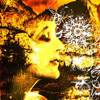Philippe Petit & Friends, "Silk-Screened"
 Philippe Petit’s recording career has always been characterized by his dual passions for reinvention and fruitful collaboration, but this audacious and imaginative album still managed to blindside me. A turntablist/laptoppist/self-described non-musician by trade, he has nevertheless managed to produce an ambitiously wild, weird, and noise-damaged avant-jazz opus with the aid of a bevy of talented pals (including a very unexpected Graham Massey on bass clarinet).
Philippe Petit’s recording career has always been characterized by his dual passions for reinvention and fruitful collaboration, but this audacious and imaginative album still managed to blindside me. A turntablist/laptoppist/self-described non-musician by trade, he has nevertheless managed to produce an ambitiously wild, weird, and noise-damaged avant-jazz opus with the aid of a bevy of talented pals (including a very unexpected Graham Massey on bass clarinet).
The vast majority of collaborations, while oft enjoyable, generally seem contaminated by the feeling that the final product is a compromise between the various participants’ visions (or worse, that no one wanted to squander their best material on something that was not exclusively their own). Albums that feature a large number of guest musicians, on the other hand, are an entirely different animal altogether. They seldom stand with an artist’s best material and most frequently are remembered for being uncharacteristically informal, an exploration of an experimental whim, or merely a document of a particularly fun recording session. Petit impressively avoids either of those fates here, however, as Silk-Screened is a clear career highlight and he absolutely could not have made it on his own: the whole is significantly greater than the sum of its parts.
Petit’s strain of jazz is certainly a unique one, as it falls very much in line with his stated “psycho-film-noir ambiance” aesthetic (yet without sounding much anything like his previous album Henry: The Iron Man). Some of album’s tracks sound like they’d fit very comfortably on the soundtrack to a classic old hard-boiled detective film, like the opening “Neon Woman,” which very effectively conjures up images of a trench coated man slipping out of a shadowy alley. Others, like the closing “Beyond The Mist,” betray a modern classical influence that suggests an artier/post-French Wave take on the noir genre.
The inspired re-envisionings that bookend Silk-Screened, however, are not nearly as compelling as more original three-song maelstrom that composes its center. “A Swirling Mix of Dystopia” is the wildest, most hard-hitting piece on the album, quickly escalating from vinyl hiss and a sad trumpet to a roiling squall of dense guitar abuse and electronics. Andy Diagram’s lyrically melancholy trumpeting remains in the foreground throughout the entire 11-minute running time, providing a very musical center for the rest of the song to erupt around. In fact, it even deceptively sounds like an entire horn section jumps in towards the end to supply hooky stabs (before it collapses into a howling free jazz frenzy, anyway).
“Blossoming Krokus” takes a much more pastoral, impressionist tone, as saxophonist Perceval Bellone delivers a lovely solo over a shimmering and haunting bed of strings, vibraphone, hissing, and clinking glass. “A Swirling Mix of Utopia” follows with a dark, disquieting Massey bass clarinet performance over an undulating fog of crackling field recordings, cymbal flourishes, and dissonantly twinkling guitars. It ultimately culminates into another infernal, howling crescendo (much like its similarly named predecessor), but it takes a very long time to get there and the build-up is deliciously tense. Unlike in “Dystopia” though, the apocalyptic outro is kept very low in the mix here, which is a very effective production move. Massey’s clarinet never cedes (or even shares) the foreground, but it becomes increasingly clear that there is some seriously cathartic entropy bubbling beneath it (yet somehow restrained).
Despite the fact that the cast of musicians does not remain at all consistent from song to song, the whole album feels like the work of a single, very talented ensemble. Petit clearly fed off of (and allowed himself to be challenged by) the energy and the ideas of his assembled friends, but it is always quite clear that he is the guiding force and that the raw material is ultimately sculpted into his focused vision. Musically, Philippe’s contributions are simultaneously subtle and massive. Center stage always belongs to the musicians and it is generally quite difficult to tell when a sound is originating from Petit and his turntable. However, once I actually analyzed how few musicians were involved in each song, it became clear that he was responsible for inconspicuously adding quite a staggering amount of layering, density, and power to the performances. The only real flaw with the album is that Petit and Ronan Benoit weren’t very imaginative with the drums, as they are a bit too tethered in traditional rock/post-rock beats and fills to fully befit the unhinged cacophony of “Utopia” and “Dystopia,” but that is a comparatively small quibble for such an inspired and surprising effort.
Samples:



